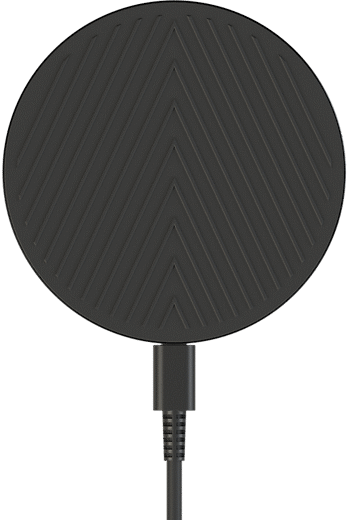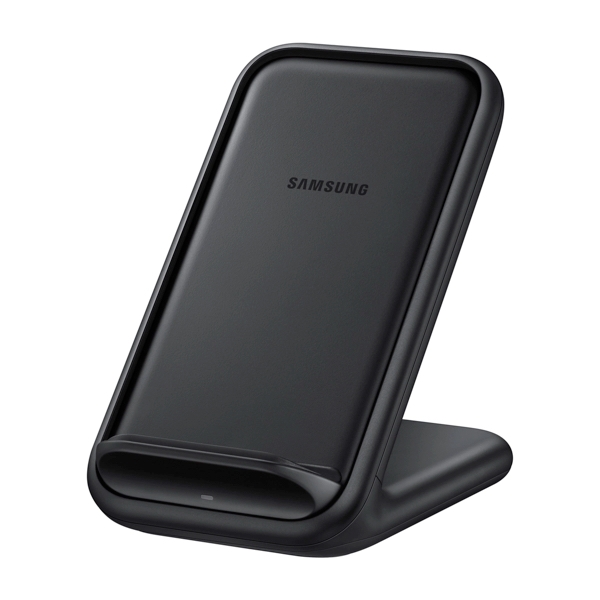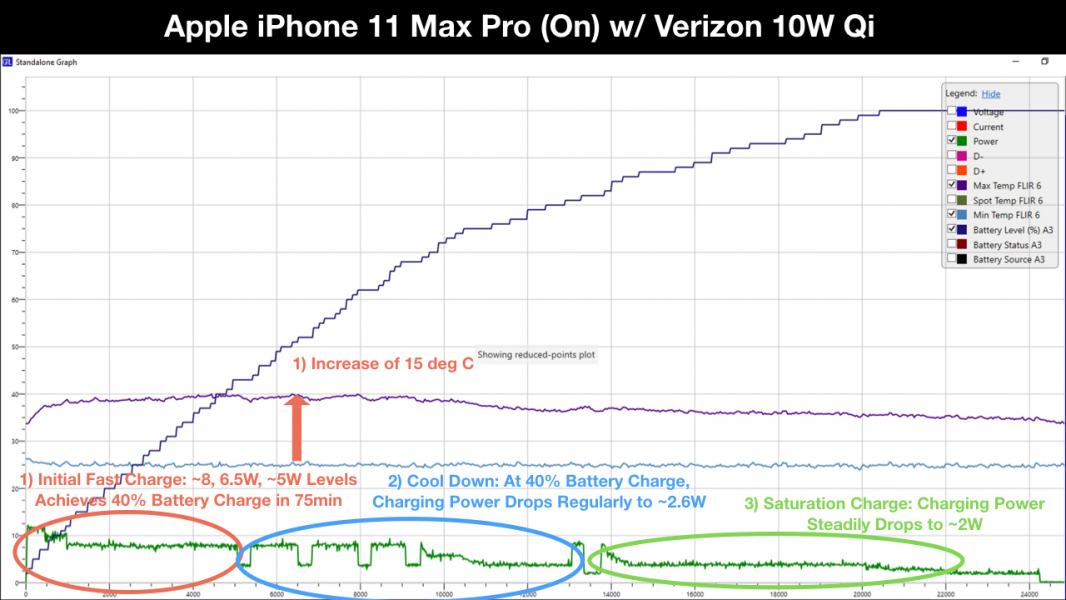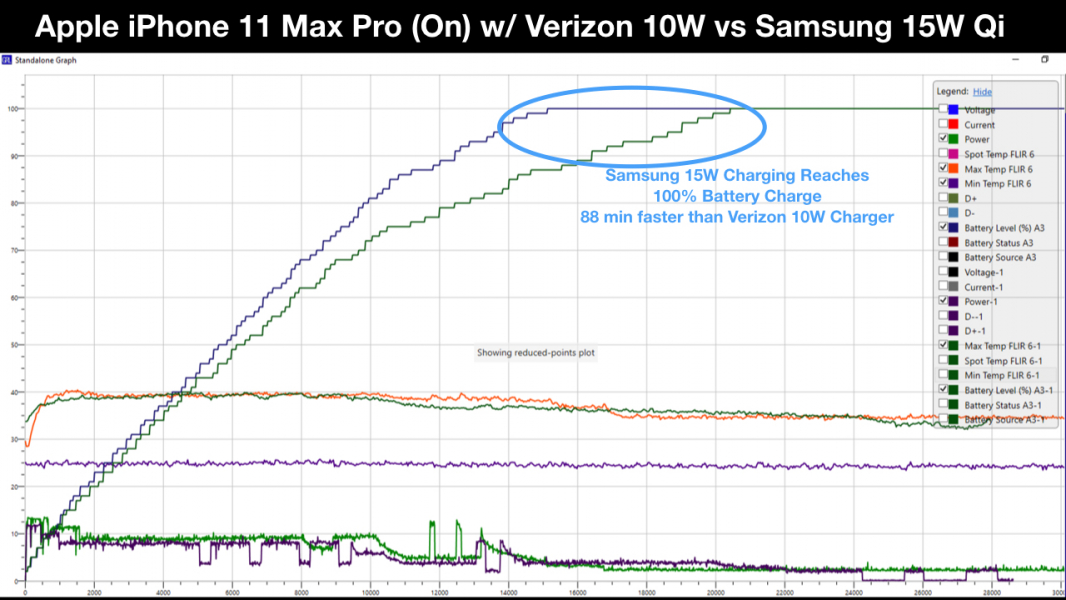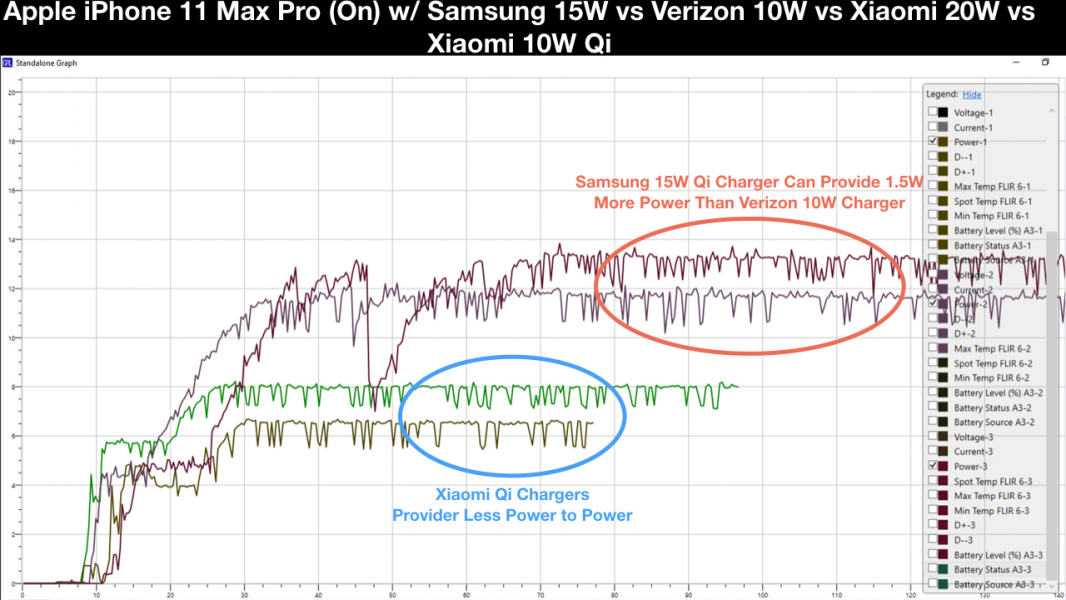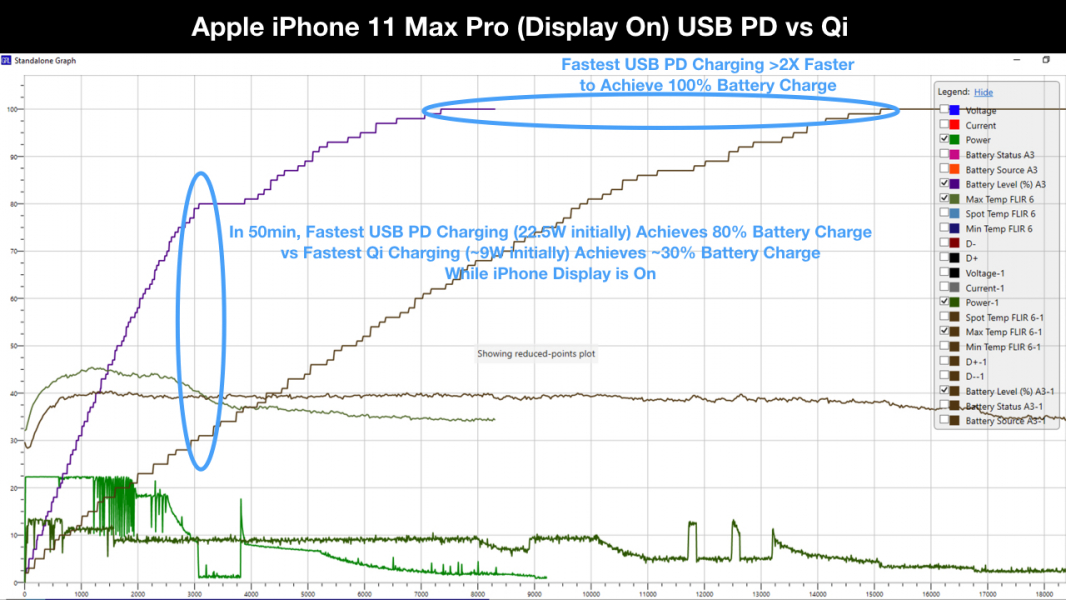In a previous review, we saw how with the iPhone XS Max, iPhones have increased how much power is drawn while charging using USB Power Delivery (PD) technology. Let’s see now how the iPhone 11 Pro Max charges with different types of Qi chargers- one of the big differences between Qi and USB PD technology is wider variety in charging behavior found in Qi versus USB PD.
We use the GRL-C2 USB PD Tester and GRL-PSP Power Analyzer software from Granite River Labs to analyze the details on how the iPhone 11 Pro Max works with various Qi chargers and the USB chargers powering them.
First we connect the iPhone 11 Pro Max at 2% battery with display and WI-FI left active (without the display going to sleep) to the Qi based Verizon 10W Wireless Charging Pad. Here we are measuring the power being consumed on the USB side of the Qi pad, which is the pad’s source of power. The pad itself consumes about 2.5 watts so the difference between the USB power and the pad’s consumption power, less some transfer efficiency loss, is the power that actually goes into the phone. Here we assume a 65% power transfer efficiency.
With the Verizon 10W Wireless Charging Pad, we estimate that the iPhone 11 Pro Max is getting about ~8 watts of charging but that drops down to ~6.5 watts and ~5W during the initial fast charging phase. This initial phase achieves 40% battery charging in 75 minutes with a temperature increase of 15° C.
After this initial fast charging phase, the iPhone 11 Pro Max then enters a cool down phase where it drops current periodically such that the power switches between periods of ~5W and periods of ~2.6W.
Finally, after the battery has reached 80%, the iPhone 11 Pro Max enters a saturation charge phase where the phone’s battery voltage has already reached its maximum level and the current steadily drops until the battery is fully charged.
If we next drain the iPhone 11 Pro Max to a dead battery state and charge the phone without turning on the display, we can see that the iPhone charges at a max of 6W while the display is off. We can see that when the display is on, the iPhone charges at a wider power range perhaps to help keep the temperature down.
We now look at the Samsung 15W Wireless Charger Stand and see if the iPhone 11 Pro Max is able to take advantage of the stand’s higher 15W power. Here we see that the iPhone 11 Pro Max is able to reach ~9W of max charging instead of the ~8W seen with the Verizon 10W Wireless Charging Pad. However, the main reason why the iPhone charges 88 minutes faster with the Samsung stand vs the Verizon pad is that the iPhone uses less aggressive power management with the Samsung stand. With the Samsung 15W Wireless Charger Stand, we don’t see the same periodic reductions in power drawn as with the Verizon 10W Wireless Charging Pad.
However, not all Qi chargers which advertise higher power will actually charge the iPhone 11 Pro Max quickly. If we look at using the Xiaomi 30W Wireless Charging Stand and the Xiaomi 10W Wireless Charging Stand, we can see that the Xiaomi Qi chargers, despite having higher power, are not as effective with the iPhone 11 Pro Max compared to when charging Xiaomi phones. The iPhone 11 Pro Max does not take advantage of the higher power that is possible on these Xiaomi chargers.
To compare how the iPhone 11 Pro Max charges using Qi wireless charging technology versus USB wired charging technology, we look at how the iPhone charges with the Samsung 15W Wireless Charger Stand versus the Apple 30W USB-C Power Adapter since they represent the fastest charging behavior possible using both technologies. In 50 minutes, USB Power Delivery achieves 80% battery charge on the iPhone while Qi wireless charging achieves about 30% charge in the same time frame while the phone display is on.
With the iPhone 11 Pro Max and the Samsung 15W Wireless Charger Stand, it's great to see the improvement in Qi charging speed. However, if the user doesn't mind plugging in a cable, he or she still gets a faster more consistent charging experience using USB Power Delivery technology.
Note all the testing above was done with the iPhone software version 13.0. We will see how the iPhone 11 Pro Max charging behavior changes with software version 13.3 in later posts.
Click here to see how the Samsung Galaxy Note 10+ charges over Qi.
 GTrusted
GTrusted




